Navigation
Install the app
How to install the app on iOS
Follow along with the video below to see how to install our site as a web app on your home screen.
Note: This feature may not be available in some browsers.
More options
You are using an out of date browser. It may not display this or other websites correctly.
You should upgrade or use an alternative browser.
You should upgrade or use an alternative browser.
eBay: Martin B-26 Marauder
- Thread starter Snautzer01
- Start date
Ad: This forum contains affiliate links to products on Amazon and eBay. More information in Terms and rules
More options
Who Replied?Airframes
Benevolens Magister
There were two gun pods on either side of the nose, if that counts ?
fubar57
General
I think
 Greg Boeser
might know a thing or three about this
Greg Boeser
might know a thing or three about this
Greg Boeser
1st Lieutenant
Operationally, the first fixed forward gun was installed on a B-26 of the 22nd BG in May of 1942. A single .50 cal, mounted on the floor in the nose compartment of B-26 MA #40-1421, "YEAH!". Interestingly, it was not copied by other 22nd BG aircraft.
The 69th Bomb Squadron based in New Caledonia, modified all their B-26B MAs with this installation in late 1942.
In September 1942 an AAF directive ordered all B-26B, B-26B-1 and B-26C to be fitted with a single fixed forward .50 cal, and four removable fuselage mounted .50 caliber "package" guns.
The 70th BS, in Fiji, retrofitted their B-26B MA with the package guns in October-November 1942, but did not install the fixed nose gun. They found that the recoil was too much for the skin of the aircraft, and reduced the armament to two package guns by January 1943.
In Alaska, after losing two aircraft to AA attacking shipping around Kiska in October 1942, at least one 73rd BS was modified with two .50s and two 20mm mounted in the nose. (Some sources mention several so modified, but I have only seen pictures of one.)
B-26B, B-26B-2, B-26B-3 and B-26B-4 assigned to the 17th, 319th 320th and 322nd BGs were retrofitted with the single fixed nose gun prior to deployment overseas, though most lacked the four package guns.
B-26C and B-26B-10 and later blocks were fitted with the fixed nose gun and the package guns as standard equipment.
There were some experimental fittings of other armament, including a pannier with four 20mm guns fitted under the bomb bay, but these never got past the test stages.
The 69th Bomb Squadron based in New Caledonia, modified all their B-26B MAs with this installation in late 1942.
In September 1942 an AAF directive ordered all B-26B, B-26B-1 and B-26C to be fitted with a single fixed forward .50 cal, and four removable fuselage mounted .50 caliber "package" guns.
The 70th BS, in Fiji, retrofitted their B-26B MA with the package guns in October-November 1942, but did not install the fixed nose gun. They found that the recoil was too much for the skin of the aircraft, and reduced the armament to two package guns by January 1943.
In Alaska, after losing two aircraft to AA attacking shipping around Kiska in October 1942, at least one 73rd BS was modified with two .50s and two 20mm mounted in the nose. (Some sources mention several so modified, but I have only seen pictures of one.)
B-26B, B-26B-2, B-26B-3 and B-26B-4 assigned to the 17th, 319th 320th and 322nd BGs were retrofitted with the single fixed nose gun prior to deployment overseas, though most lacked the four package guns.
B-26C and B-26B-10 and later blocks were fitted with the fixed nose gun and the package guns as standard equipment.
There were some experimental fittings of other armament, including a pannier with four 20mm guns fitted under the bomb bay, but these never got past the test stages.
Greg Boeser
1st Lieutenant
Well, why not?
Simple reason, the B-26 was not designed as an attack aircraft. It was designed as a fast, medium altitude bomber, capable of carrying the same payload as the B-17. The B-25 on the other hand, was a redesign of a prototype attack bomber (the NA-40) which lost out to the Douglas A-20. North American enlarged the design to try to meet the specs of Air Corps Circular Proposal 39-640. This design (NA-62) finished a distant second behind the Martin 179. The flirtation with using the B-26 as a low altitude attack aircraft was brief. Operational usage demonstrated that the design was ill suited to that role. In the Pacific, where the Marauder was initially deployed, attempts to use it as a torpedo plane were frustrated by the lack of an effective aerial torpedo. At Midway, Dutch Harbor, and later at Kiska, torpedo attacks were failures due in part to the unsuitable attack profile required by the Mark XIII torpedo. The pilot would have to slow the B-26 almost to stall speed to launch the torpedo. At Midway three of four planes were able to launch their torpedoes at Akagi. None hit. Agaist the Northern Force attacking Dutch Harbor several flights were sent out, but could not locate the enemy fleet. Lt George Thornbrough did locate the fleet, but could not by himself penetrate the screen of escorts and fighters. He tried to dive bomb the Ryujo with his torpedo, but missed. He went back to base rearmed with bombs and went out again, but failed to relocate the enemy. His plane crashed after running out of gas when his base was socked in due to the horrible weather. Another attempt by torpedo armed B-26s failed to score, though they claimed a hit on a cruiser. Alaska based B-26s were used at low level vs shipping for the simple reason that the Aleutian Islands were usually engulfed by low overcast. Two unsuccessful torpedo attacks vs a grounded ship in Kiska's Gertrude Cove on October 14th, 1942 convinced the Air Force to stick with bombs. Two days later six B-26s sank the IJN destroyer Oboro and crippled the Hatsuharu in a mast height attack off Kiska. A mast height attack on the Cheribon Maru 26 November 1942 in Holtz Bay, Attu left the ship burning and sinking. CPT John Pletcher led the mission in a cannon and mg armed strafer. (#40-1558)
In the southwest Pacific, the 22nd BG stuck to medium to low altitude conventional attacks. The 69th and 70th BS in the South Pacific trained as torpedo bombers, but aside from the two planes committed at Midway, never dropped a torpedo in anger. They also trained for skip bombing, but did not use this technique until after converting to B-25s in 1943.
One notable low level raid vs the Japanese seaplane base at Rekata Bay on Jan 7, 1943 was a disaster. the lead plane was shot down and another had to be abandoned over Guadalcanal due to battle damage. Several others were badly damaged.
By the early February 1943 the B-26 was being phased out of the Pacific. All but one squadron of the 22nd BG transitioned into B-25s. The two Alaska based squadrons transitioned to B-25s. 77th BS began in September 1942, returning to offensive missions in December. 73rd BS flew the Marauder's last combat mission in the Aleutians 18 Jan 1943. The 69th and 70th ceased offensive missions with B-26s in Feb 1943. The 69th had begun receiving B-25s in September '42, but did not use them operationally until June '43. The 70th would not return to combat until October 1943.
In North Africa low level attacks were found to be prohibitively expensive, due to the prevalence of plentiful, accurate light and medium flak. the Africa based Marauders had to resort to medium level attacks, heavily escorted by fighters to fend off the German interceptors. So, after all the trouble of fitting out Marauders for low level attacks, they went back to being used as they had originally been intended. This lesson had to be relearned in England in May 1943, after the second attempt at an unescorted, low level attack vs Ijmuiden was completely wiped out. So in the end all that forward firing armament just added weight and drag, and extra headaches for the armorers who had to keep that stuff clean and operative, just in case some Kraut fighter pilot might break through and make a head on pass at that tight formation of Marauders. Eventually, as Axis fighter opposition dwindled in the MTO, units removed one or both pairs of the package guns. The fixed nose gun was also often removed. Even being eliminated on the production line of late model B-26s.
Simple reason, the B-26 was not designed as an attack aircraft. It was designed as a fast, medium altitude bomber, capable of carrying the same payload as the B-17. The B-25 on the other hand, was a redesign of a prototype attack bomber (the NA-40) which lost out to the Douglas A-20. North American enlarged the design to try to meet the specs of Air Corps Circular Proposal 39-640. This design (NA-62) finished a distant second behind the Martin 179. The flirtation with using the B-26 as a low altitude attack aircraft was brief. Operational usage demonstrated that the design was ill suited to that role. In the Pacific, where the Marauder was initially deployed, attempts to use it as a torpedo plane were frustrated by the lack of an effective aerial torpedo. At Midway, Dutch Harbor, and later at Kiska, torpedo attacks were failures due in part to the unsuitable attack profile required by the Mark XIII torpedo. The pilot would have to slow the B-26 almost to stall speed to launch the torpedo. At Midway three of four planes were able to launch their torpedoes at Akagi. None hit. Agaist the Northern Force attacking Dutch Harbor several flights were sent out, but could not locate the enemy fleet. Lt George Thornbrough did locate the fleet, but could not by himself penetrate the screen of escorts and fighters. He tried to dive bomb the Ryujo with his torpedo, but missed. He went back to base rearmed with bombs and went out again, but failed to relocate the enemy. His plane crashed after running out of gas when his base was socked in due to the horrible weather. Another attempt by torpedo armed B-26s failed to score, though they claimed a hit on a cruiser. Alaska based B-26s were used at low level vs shipping for the simple reason that the Aleutian Islands were usually engulfed by low overcast. Two unsuccessful torpedo attacks vs a grounded ship in Kiska's Gertrude Cove on October 14th, 1942 convinced the Air Force to stick with bombs. Two days later six B-26s sank the IJN destroyer Oboro and crippled the Hatsuharu in a mast height attack off Kiska. A mast height attack on the Cheribon Maru 26 November 1942 in Holtz Bay, Attu left the ship burning and sinking. CPT John Pletcher led the mission in a cannon and mg armed strafer. (#40-1558)
In the southwest Pacific, the 22nd BG stuck to medium to low altitude conventional attacks. The 69th and 70th BS in the South Pacific trained as torpedo bombers, but aside from the two planes committed at Midway, never dropped a torpedo in anger. They also trained for skip bombing, but did not use this technique until after converting to B-25s in 1943.
One notable low level raid vs the Japanese seaplane base at Rekata Bay on Jan 7, 1943 was a disaster. the lead plane was shot down and another had to be abandoned over Guadalcanal due to battle damage. Several others were badly damaged.
By the early February 1943 the B-26 was being phased out of the Pacific. All but one squadron of the 22nd BG transitioned into B-25s. The two Alaska based squadrons transitioned to B-25s. 77th BS began in September 1942, returning to offensive missions in December. 73rd BS flew the Marauder's last combat mission in the Aleutians 18 Jan 1943. The 69th and 70th ceased offensive missions with B-26s in Feb 1943. The 69th had begun receiving B-25s in September '42, but did not use them operationally until June '43. The 70th would not return to combat until October 1943.
In North Africa low level attacks were found to be prohibitively expensive, due to the prevalence of plentiful, accurate light and medium flak. the Africa based Marauders had to resort to medium level attacks, heavily escorted by fighters to fend off the German interceptors. So, after all the trouble of fitting out Marauders for low level attacks, they went back to being used as they had originally been intended. This lesson had to be relearned in England in May 1943, after the second attempt at an unescorted, low level attack vs Ijmuiden was completely wiped out. So in the end all that forward firing armament just added weight and drag, and extra headaches for the armorers who had to keep that stuff clean and operative, just in case some Kraut fighter pilot might break through and make a head on pass at that tight formation of Marauders. Eventually, as Axis fighter opposition dwindled in the MTO, units removed one or both pairs of the package guns. The fixed nose gun was also often removed. Even being eliminated on the production line of late model B-26s.
- Thread starter
- #147
Snautzer01
Marshal
- 46,292
- Mar 26, 2007
- Thread starter
- #148
Snautzer01
Marshal
- 46,292
- Mar 26, 2007
- Thread starter
- #149
Snautzer01
Marshal
- 46,292
- Mar 26, 2007
- Thread starter
- #150
Snautzer01
Marshal
- 46,292
- Mar 26, 2007
Crimea_River
Marshal
Good ones.
RagTag
Airman
Great overview of torpedo use by US B-26s. What's interesting and what seems to be a little told story is that the British had considerably better success (at least some) delivering torpedoes and sinking Axis shipping in the MTO with Marauder Mark II's and III's. Assuming the shackle set up was similar, the difference must have been in better torpedoes or tactics. Or maybe better torpedoes allowing better tactics. I wonder what torpedo was used; in some pictures it appears to be longer bodied than the US Mark XIII. Did it allow a better attack profile, shallow water performance or just downright be more reliable? If you have any insight on this would be appreciated.Well, why not?
Simple reason, the B-26 was not designed as an attack aircraft. It was designed as a fast, medium altitude bomber, capable of carrying the same payload as the B-17. The B-25 on the other hand, was a redesign of a prototype attack bomber (the NA-40) which lost out to the Douglas A-20. North American enlarged the design to try to meet the specs of Air Corps Circular Proposal 39-640. This design (NA-62) finished a distant second behind the Martin 179. The flirtation with using the B-26 as a low altitude attack aircraft was brief. Operational usage demonstrated that the design was ill suited to that role. In the Pacific, where the Marauder was initially deployed, attempts to use it as a torpedo plane were frustrated by the lack of an effective aerial torpedo. At Midway, Dutch Harbor, and later at Kiska, torpedo attacks were failures due in part to the unsuitable attack profile required by the Mark XIII torpedo. The pilot would have to slow the B-26 almost to stall speed to launch the torpedo. At Midway three of four planes were able to launch their torpedoes at Akagi. None hit. Agaist the Northern Force attacking Dutch Harbor several flights were sent out, but could not locate the enemy fleet. Lt George Thornbrough did locate the fleet, but could not by himself penetrate the screen of escorts and fighters. He tried to dive bomb the Ryujo with his torpedo, but missed. He went back to base rearmed with bombs and went out again, but failed to relocate the enemy. His plane crashed after running out of gas when his base was socked in due to the horrible weather. Another attempt by torpedo armed B-26s failed to score, though they claimed a hit on a cruiser. Alaska based B-26s were used at low level vs shipping for the simple reason that the Aleutian Islands were usually engulfed by low overcast. Two unsuccessful torpedo attacks vs a grounded ship in Kiska's Gertrude Cove on October 14th, 1942 convinced the Air Force to stick with bombs. Two days later six B-26s sank the IJN destroyer Oboro and crippled the Hatsuharu in a mast height attack off Kiska. A mast height attack on the Cheribon Maru 26 November 1942 in Holtz Bay, Attu left the ship burning and sinking. CPT John Pletcher led the mission in a cannon and mg armed strafer. (#40-1558)
In the southwest Pacific, the 22nd BG stuck to medium to low altitude conventional attacks. The 69th and 70th BS in the South Pacific trained as torpedo bombers, but aside from the two planes committed at Midway, never dropped a torpedo in anger. They also trained for skip bombing, but did not use this technique until after converting to B-25s in 1943.
One notable low level raid vs the Japanese seaplane base at Rekata Bay on Jan 7, 1943 was a disaster. the lead plane was shot down and another had to be abandoned over Guadalcanal due to battle damage. Several others were badly damaged.
By the early February 1943 the B-26 was being phased out of the Pacific. All but one squadron of the 22nd BG transitioned into B-25s. The two Alaska based squadrons transitioned to B-25s. 77th BS began in September 1942, returning to offensive missions in December. 73rd BS flew the Marauder's last combat mission in the Aleutians 18 Jan 1943. The 69th and 70th ceased offensive missions with B-26s in Feb 1943. The 69th had begun receiving B-25s in September '42, but did not use them operationally until June '43. The 70th would not return to combat until October 1943.
In North Africa low level attacks were found to be prohibitively expensive, due to the prevalence of plentiful, accurate light and medium flak. the Africa based Marauders had to resort to medium level attacks, heavily escorted by fighters to fend off the German interceptors. So, after all the trouble of fitting out Marauders for low level attacks, they went back to being used as they had originally been intended. This lesson had to be relearned in England in May 1943, after the second attempt at an unescorted, low level attack vs Ijmuiden was completely wiped out. So in the end all that forward firing armament just added weight and drag, and extra headaches for the armorers who had to keep that stuff clean and operative, just in case some Kraut fighter pilot might break through and make a head on pass at that tight formation of Marauders. Eventually, as Axis fighter opposition dwindled in the MTO, units removed one or both pairs of the package guns. The fixed nose gun was also often removed. Even being eliminated on the production line of late model B-26s.
Greg Boeser
1st Lieutenant
The RAF did use the Marauder as a torpedo plane, again, briefly. 14 Squadron traded in its Blenheims for Marauder Mk Is in August 1942. It resumed operations in late October, flying maritime reconnaissance and trained for torpedo attack. Flying in pairs, the Marauders sought out Axis shipping in the Eastern Mediterranean and Aegean Seas. Several attacks were made in January and February 1943. Encounters on 3 Jan and 12 Jan failed to score. On 19 January, 1943 a pair of Marauders torpedoed and sank the 654 ton Italian tanker Alfredo. Two more unsuccessful attacks were made on 23 Jan and 1 Feb. On the 15th, a pair was intercepted and shot down by a lone Bf 109. The final torpedo mission flown by RAF Marauders was the attack on Milos Harbor on Feb 21st. Three torpedo carrying Marauders were accompanied by six carrying bombs. The torpedo attack sank the 1300 ton Artemis Pitta, while the bombers attacking afterwards failed to hit any ships but did some damage to harbor installations. Two bombers were lost. 14 Squadron reverted to pure maritime reconnaissance after this mission.
RagTag
Airman
And that would be another interesting story of their use as "fighters". Thanks, great description of B-26 torpedo operations by US and Britain that I have not seen so clearly put. It looks like the probable torpedo the British were most likely carrying was their 18" Mark XII. It appears to have allowed a higher release altitude and faster delivery airspeed than the US Mark 13 of the time, which was of pretty marginal effectiveness. It also ran faster, which I think might aid accuracy. Too bad we didn't have the British torpedoes at Midway. It seems also to carry a little more gracefully underneath than the Mark 13.The RAF did use the Marauder as a torpedo plane, again, briefly. 14 Squadron traded in its Blenheims for Marauder Mk Is in August 1942. It resumed operations in late October, flying maritime reconnaissance and trained for torpedo attack. Flying in pairs, the Marauders sought out Axis shipping in the Eastern Mediterranean and Aegean Seas. Several attacks were made in January and February 1943. Encounters on 3 Jan and 12 Jan failed to score. On 19 January, 1943 a pair of Marauders torpedoed and sank the 654 ton Italian tanker Alfredo. Two more unsuccessful attacks were made on 23 Jan and 1 Feb. On the 15th, a pair was intercepted and shot down by a lone Bf 109. The final torpedo mission flown by RAF Marauders was the attack on Milos Harbor on Feb 21st. Three torpedo carrying Marauders were accompanied by six carrying bombs. The torpedo attack sank the 1300 ton Artemis Pitta, while the bombers attacking afterwards failed to hit any ships but did some damage to harbor installations. Two bombers were lost. 14 Squadron reverted to pure maritime reconnaissance after this mission.
Last edited:
Good shots!
Jimbob
Airman 1st Class
I have a grouping I bought years ago from a USAAF pilot Robert F. Harper who flew B-26's, B-25's in ETO and A-26's in Pacific Theater including all his logbooks, paperwork, wings, jacket patches and lots of photos. Many mission and personal in theater photos. I have included some nose art photos. Not sure if this is the correct forum. Lots of cool stuff from a pilot who was there. I have much more from this collection if you are interested.
Attachments
-
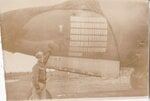 IMG_20160307_0134.jpg82.2 KB · Views: 137
IMG_20160307_0134.jpg82.2 KB · Views: 137 -
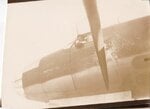 IMG_20160308_0023.jpg72.8 KB · Views: 140
IMG_20160308_0023.jpg72.8 KB · Views: 140 -
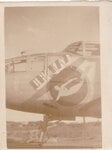 IMG_20160308_0043.jpg82.7 KB · Views: 141
IMG_20160308_0043.jpg82.7 KB · Views: 141 -
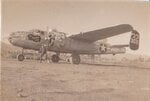 IMG_20160308_0044.jpg96.3 KB · Views: 147
IMG_20160308_0044.jpg96.3 KB · Views: 147 -
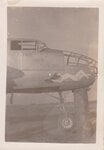 IMG_20160308_0045.jpg61.9 KB · Views: 142
IMG_20160308_0045.jpg61.9 KB · Views: 142 -
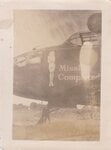 IMG_20160308_0046.jpg80.2 KB · Views: 128
IMG_20160308_0046.jpg80.2 KB · Views: 128 -
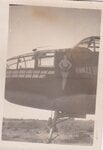 IMG_20160308_0047.jpg63 KB · Views: 116
IMG_20160308_0047.jpg63 KB · Views: 116 -
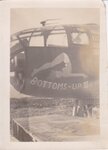 IMG_20160308_0048.jpg72.4 KB · Views: 126
IMG_20160308_0048.jpg72.4 KB · Views: 126 -
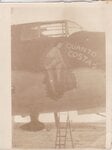 IMG_20160308_0049.jpg53.5 KB · Views: 113
IMG_20160308_0049.jpg53.5 KB · Views: 113 -
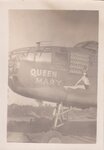 IMG_20160308_0050.jpg70.7 KB · Views: 122
IMG_20160308_0050.jpg70.7 KB · Views: 122 -
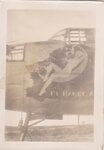 IMG_20160308_0051.jpg69 KB · Views: 135
IMG_20160308_0051.jpg69 KB · Views: 135 -
 IMG_20160308_0054.jpg75 KB · Views: 132
IMG_20160308_0054.jpg75 KB · Views: 132 -
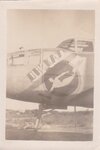 IMG_20160308_0055.jpg61.6 KB · Views: 135
IMG_20160308_0055.jpg61.6 KB · Views: 135 -
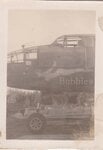 IMG_20160308_0056.jpg64.4 KB · Views: 123
IMG_20160308_0056.jpg64.4 KB · Views: 123 -
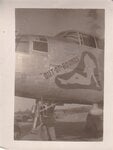 IMG_20160308_0057.jpg70.5 KB · Views: 117
IMG_20160308_0057.jpg70.5 KB · Views: 117 -
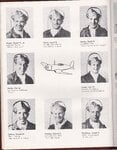 IMG_20160313_0114.jpg1.5 MB · Views: 134
IMG_20160313_0114.jpg1.5 MB · Views: 134
fubar57
General
Thanks for posting these and am very interested to see more
RagTag
Airman
128 mission Marauder!I have a grouping I bought years ago from a USAAF pilot Robert F. Harper who flew B-26's, B-25's in ETO and A-26's in Pacific Theater including all his logbooks, paperwork, wings, jacket patches and lots of photos. Many mission and personal in theater photos. I have included some nose art photos. Not sure if this is the correct forum. Lots of cool stuff from a pilot who was there. I have much more from this collection if you are interested.
Users who are viewing this thread
Total: 1 (members: 0, guests: 1)
Similar threads
- Replies
- 2
- Views
- 1K
